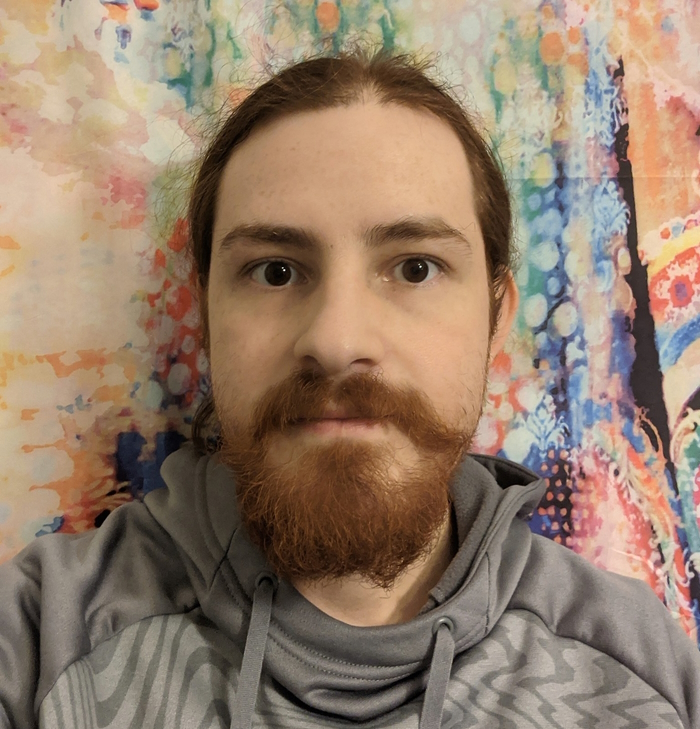Andrés Gómez Emilsson, MSc
Andrés Gómez Emilsson MSc. is the Director of Research and Consciousness Researcher at Qualia Research Institute where he answers questions regarding consciousness and each individual’s perception of experience or qualia. He is also Cofounder of the Stanford Transhumanist Association.
Qualia are defined as individual instances of subjective, conscious experience or the range of ways experience presents itself. The Qualia Research Institute is trying to recognize the computational role of consciousness and the causal network that links it to behavior. In that regard, the institute is working on characterizing the various values of qualia in terms of their computational properties, and systematically exploring the state-space of possible conscious experiences.
His work at QRI ranges from algorithm design and psychedelic theory to neurotechnology development, and to mapping and studying the computational properties of consciousness. Read The “Slicing Problem” for Computational Theories of Consciousness and The Heavy-Tailed Valence Hypothesis: The human capacity for vast variation in pleasure/pain and how to test it.
Andrés’ research aims to create a mathematical theory of the pleasure-pain axis that can take information about a person’s brain at a given point in time and return the approximate (or even true) level of happiness and suffering for that person.
There are two dimensions that have been studied in affective neuroscience for decades:
- Arousal: how much energy and activation a given emotion has
- Valence: the “feel good or feel bad” dimension of emotion
If the purpose of life is to feel happy and to make others happy, then figuring out how valence is implemented in the brain may take us a long way in that direction. Current approaches to valence, while helpful, usually don’t address the core of the problem (ie. usually just measuring the symptoms of pleasure such as the neurotransmitters that trigger it, brain regions, positive reinforcement, etc. rather than getting at the experience of pleasure itself). Watch On Logarithmic Scales Of Pleasure And Pain: Rating, Ranking, And Comparing Peak Experiences Suggest The Existence Of Long Tails For Bliss And Suffering.
A real science of valence would not only be able to integrate and explain why the things people report as pleasurable are pleasant, but it would also make a precise, empirically falsifiable hypothesis about whether arbitrary brain states will feel good or bad. This is what Andrés aims to do.
Read Aligning DMT Entities: Shards, Shoggoths, and Waluigis where Andrés addresses a seeming resemblance between “rogue AI behavior” in Microsoft’s Bing and rogue DMT entities. Also, watch his video comment on the topic.
Previously, Andrés was Data Science Engineer at Ultimate Software between 2016 and 2018, and at Kanjoya from 2015. Kanjoya was acquired by Ultimate Software, which was later merged with Kronos to become UKG.
At Kanjoya, Andrés developed and applied Natural Language Understanding (NLU) to Human Resources problems. When he joined Ultimate Software, he was working on Natural Language Processing for performance reviews and engagement surveys. He focused on speech, mood, and topic. He developed prediction of the future trajectory of group emotion, employee performance, and retention prediction.
Andrés earned his Master’s Degree of Science in Computational Psychology from Stanford University in 2015. During his time there, he cofounded and was President of the Stanford Transhumanist Association. He also worked at the Language and Cognition Lab as Research Assistant.
In 2014, he was Teaching Assistant for the class SymSys 100 “Minds and Machines.”
At Stanford, he also became good friends with transhumanist philosopher David Pearce, taking on the flag of the Hedonistic Imperative (HI) and deciding to make the abolition of suffering his life goal. Watch The Mind of David Pearce.
In his free time, Andrés developed psychophysics experiments for pattern recognition in the human visual system.
His research focuses on solving problems that exist at Marr’s second level of analysis, i.e. the algorithmic/representational level. In other words, he works on defining and discovering how the mind does what it does at an algorithmic level. Central issues involve understanding the nature of the representations that the brain uses to solve perception and cognition problems, and the processes involved in building and manipulating these representations.
In order to pursue the long-term goals of HI, his primary intellectual interest is to reverse-engineer the functional, biochemical, and/or quantum signatures of pure bliss.
In 2013, Andrés earned his Undergraduate degree in Symbolic Systems, AI, and CogSci concentration at Stanford University.
He was previously Intern, Data Analyst at Kanjoya in 2012 and Intern, Research Engineer at Klout in 2011.
Andrés is a member of the ISI-Society, which aims to bring together intelligent individuals who also value creativity.
Andrés is a regular guest and speaker at conferences and podcasts. In 2022, he gave a lecture at the Amsterdam Psychedelic Research Association with the headline A Tool to Precisely Quantify Psychedelic Tracers: How Are the Visual Effects of 2C-B, LSD, DMT, and 5-MeO-DMT Different From Each Other?
Watch The Future of Consciousness – Andrés Gómez Emilsson, Pain & Psychedelics: A World Without Severe Chronic Pain | Andrés Gómez Emilsson | TEDxMiami, and Consciousness vs. Replicators. Watch The Brain as a Non-Linear Optical Computer: Reflections on a 2-Week Jhana Meditation Retreat and Mathematics as the Study of Patterns of Qualia: From Psychotic Platonism to Enlightened Fictionalism.
Watch his short Response to “The Very Concept of Happiness Requires Contrast” and follow his shorts contributions.
Listen to Consciousness, Psychedelics, and Panpsychism, Consciousness Engineering, and The Future of Consciousness at Utilitarian Podcast. Listen to Solving Consciousness and Being Happy All the Time and AI Alignment Podcast: Identity and the AI Revolution with David Pearce and Andrés Gómez Emilsson.
Read An introduction to Steven Lehar, part III: Flame fronts and shock scaffolds. Read and watch Symmetry in Qualia – an Interview with Andres Gomez-Emilsson by Justin Riddle.
Follow his QRI Contributions and his Quora Contributions.
Visit his LinkedIn profile and his hpluspedia page. Follow him on the Effective Altruism Forum, Facebook, YouTube, Quora, and X.
